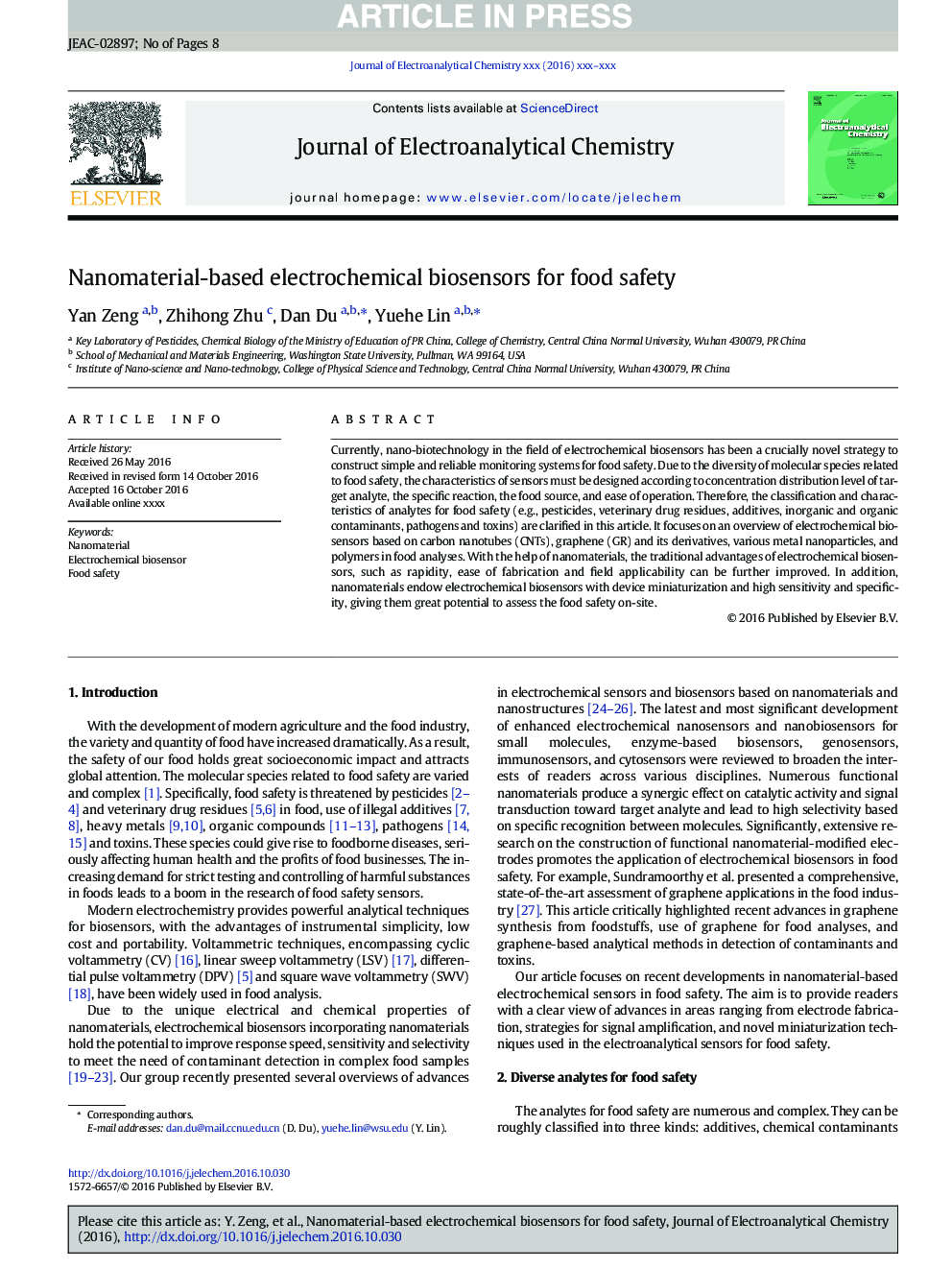| Article ID | Journal | Published Year | Pages | File Type |
|---|---|---|---|---|
| 4908153 | Journal of Electroanalytical Chemistry | 2016 | 8 Pages |
Abstract
Currently, nano-biotechnology in the field of electrochemical biosensors has been a crucially novel strategy to construct simple and reliable monitoring systems for food safety. Due to the diversity of molecular species related to food safety, the characteristics of sensors must be designed according to concentration distribution level of target analyte, the specific reaction, the food source, and ease of operation. Therefore, the classification and characteristics of analytes for food safety (e.g., pesticides, veterinary drug residues, additives, inorganic and organic contaminants, pathogens and toxins) are clarified in this article. It focuses on an overview of electrochemical biosensors based on carbon nanotubes (CNTs), graphene (GR) and its derivatives, various metal nanoparticles, and polymers in food analyses. With the help of nanomaterials, the traditional advantages of electrochemical biosensors, such as rapidity, ease of fabrication and field applicability can be further improved. In addition, nanomaterials endow electrochemical biosensors with device miniaturization and high sensitivity and specificity, giving them great potential to assess the food safety on-site.
Related Topics
Physical Sciences and Engineering
Chemical Engineering
Chemical Engineering (General)
Authors
Yan Zeng, Zhihong Zhu, Dan Du, Yuehe Lin,
